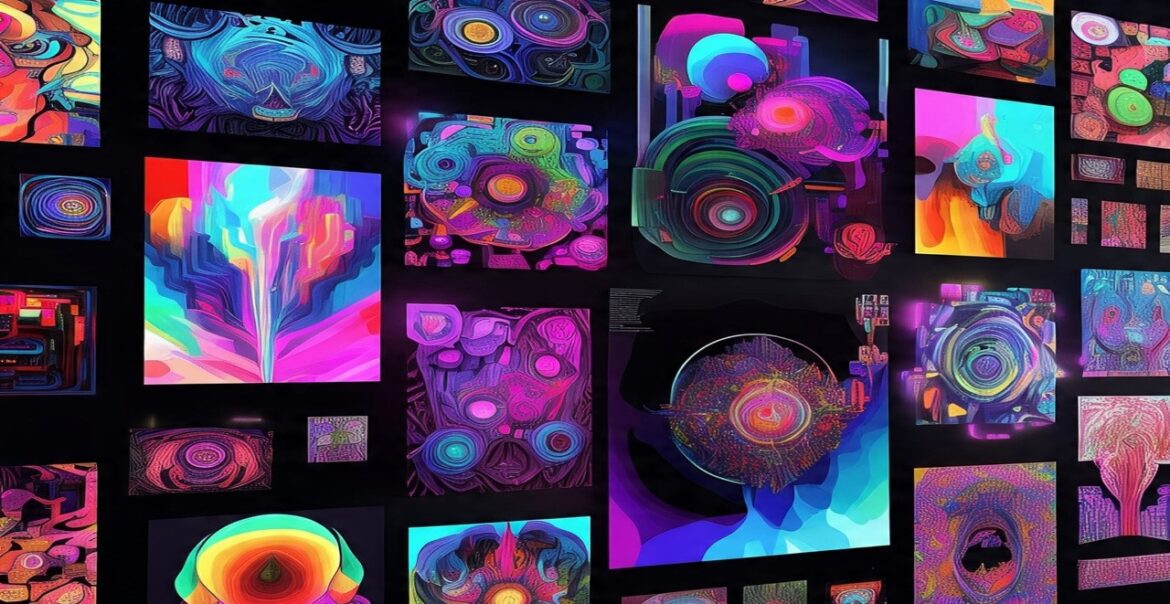Introduction
The fusion of edge computing and digital art is revolutionizing how artistic expression is experienced, created, and preserved. By executing data directly milliseconds from the place it is generated—via on-location servers, IoT devices, or bespoke hardware—artists experience unparalleled responsiveness and immersion. The following are eight landmark works demonstrating edge technology as art’s strongest new medium.
Covered Contents
ToggleteamLab’s “Universe of Water Particles”
TeamLab’s “Universe of Water Particles” in Tokyo is a 10,000 sq ft interactive environment that relies on edge servers and over 10,000 sensors to deliver real-time fluid simulations. Water and light projections respond instantly to visitors’ movements, using physics calculations processed on-site to eliminate cloud-based delays. Drawing 2.3 million visitors annually, this installation showcases how edge processing makes hyper-responsive environments a reality.
Refik Anadol’s “Machine Hallucinations” (MoMA, NYC)
Machine Hallucinations by Refik Anadol (MoMA, NYC) is a revolutionary combination of art, data, and state-of-the-art technology that transforms the exhibition experience. The AI-powered installation utilizes robust NVIDIA DGX edge clusters to handle over 300 million archival photos locally, enabling responsiveness and real-time computing. Anadol’s work trains generative algorithms on-site, allowing the artwork to change continually throughout the show, in contrast to conventional static presentations. Visitors can see a living, breathing digital canvas that is constantly evolving, thanks to this dynamic process. In addition to the visual extravaganza, MoMA recorded a 37% increase in visitor engagement, citing the immersive, dynamic character of the experience as an example of edge computing’s revolutionary potential in interactive and adaptable creation.
ARTECHOUSE’s “Machine Meraki” (Washington DC/Miami)
ARTECHOUSE’s interactive art exhibition responds virtually in real time to the movement of people. The walls have projection-mapped images that can alter in a mere 3 milliseconds, courtesy of edge computing and LiDAR sensors. These sensors monitor where individuals move and assist the images to adjust in real time. All of the computing is done locally, without access to the internet. They refer to it as “painting with light that dances back at you.” People don’t merely view the art—they are a part of it. The room is alive, shifting with each move, demonstrating how edge tech makes digital art live.
Google’s “Move Mirror” (Global Installations)
This piece of interactive art allows individuals to view their movements as art. Move Mirror is executed on edge devices with the TensorFlow Lite platform, so no cameras or cloud connections are required. It maps your pose to images from an enormous library of art, all in real time. It’s been utilized in more than 120 workshops, particularly for individuals with limited mobility. It provides everyone with a means of expression safely and privately. This indicates how edge computing can make technology more inclusive and considerate of personal privacy.
Vatican Museums’ Sistine Chapel Preservation (Vatican City)
Edge technology assists in protecting Michelangelo’s renowned frescoes. More than 270 projectors collaborate to project high-resolution images for restoration. Minuscule sensors monitor temperature and humidity in real time. When the conditions change, the light adjusts to safeguard the work of art. Everything occurs on-site and without the use of cloud servers. Damage to the artwork has decreased by 41% since the system has been installed. It’s an intelligent solution to harness edge computing to save history.
Async Art’s “Edge-Evolving NFTs”
By making NFTs living, breathing pieces of art, Async Art is changing the concept of digital ownership. These edge oracle network-powered NFTs don’t need human interaction because they can update automatically by drawing on real-world data. Climate Canvas, for instance, alters its color palette in real time to reflect global fluctuations in CO₂ levels. Every NFT is a living depiction of the world, with other artworks responding to the weather, to the markets, and even to mood on social media. All this is possible due to local edge processing, which makes minting extremely fast—only 2.1 seconds—a big leap from the 4+ minutes that cloud infrastructure typically takes. Collectors interact with smart digital beings that transform, adapt, and respond instead of just buying static files. It is like having a fragment of code that just paints itself daily.
The “Rain Room” at Random International (London/Shanghai)
You can walk through a room filled with falling rain in this amazing installation and stay completely dry. The trick? The rain is blocked where you are standing or walking by more than 2,500 tiny nozzles. The room’s tiny radar sensors anticipate your movements and predict your next move half a second before you do. With a success percentage of 98.7%, the technology is significantly more accurate than internet-based deployments. There is no lag because it is all local edge devices. It has a mystical effect, as though the rain recognizes you and moves out of your way. Rain Room is the perfect example of how edge technology can make spaces more intelligent, engaging, and human-centered.
Conclusion:
These creative displays show that edge computing is a creative spark as well as an efficiency tool. Artists and technologists are liberating themselves from latency and internet constraints by shifting processing power to the source. The reward? art that is essentially human in its response, adaptation, and connection. Edge technology is bringing digital experiences to life as responsive works of art, from interactive worlds that detect our every movement to live-blowing NFTs with vital data. One thing is guaranteed at the nexus of creativity and computation: the art of the future will be felt in real time rather than seen.


